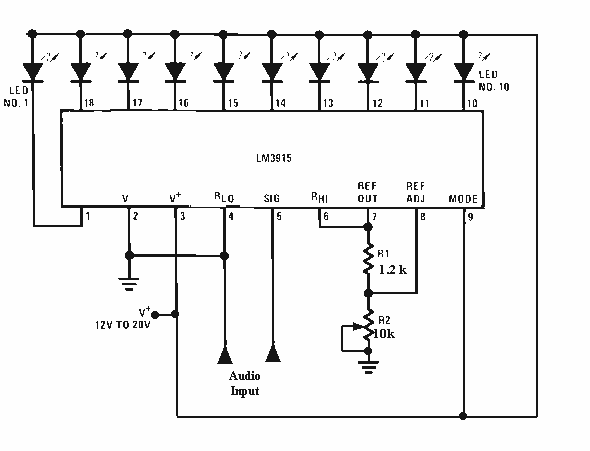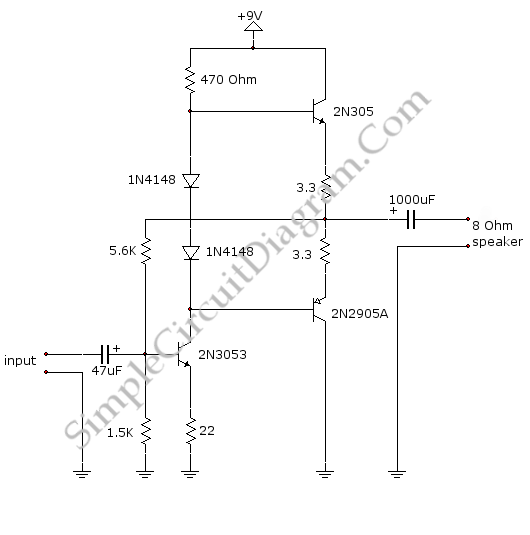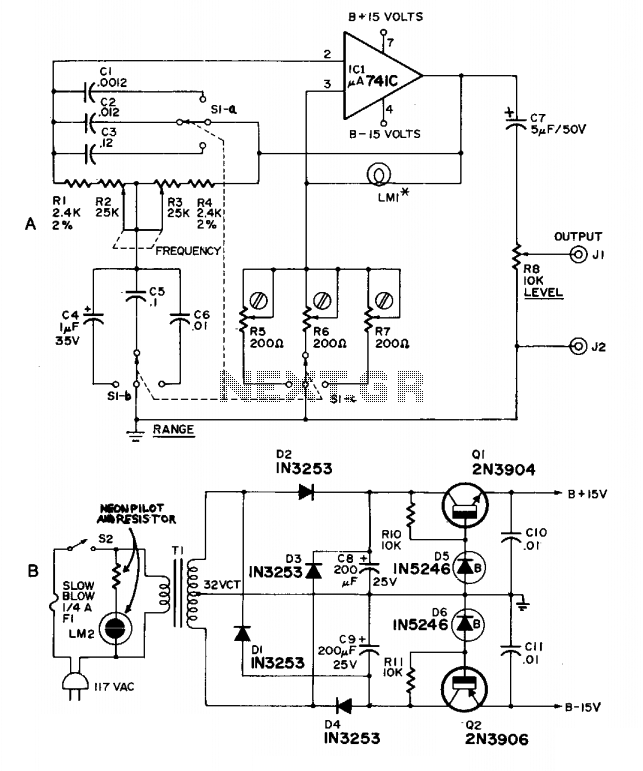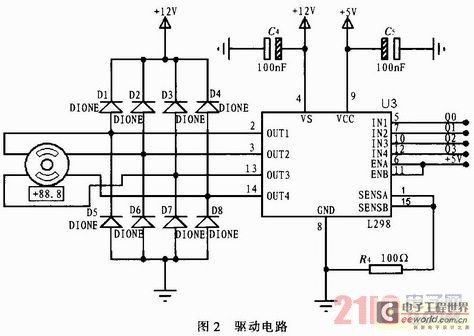
10 LEDS Audio level vumeter

The LM3915 is a monolithic integrated circuit that senses analog voltage levels and drives ten LEDs providing a logarithmic 3 dB/step analog display. LED current drive is regulated and programmable, eliminating the need for current limiting resistors. More: This circuit uses just one IC and a very few number of external components. It displays the audio level in terms of 10 LEDs. The input voltage can vary from 12V to 20V, but suggested voltage is 12V. The IC contains an adjustable voltage reference and an a
The LM3915 circuit is designed for applications requiring visual representation of an analog signal level, such as audio level meters. The IC operates by sensing the input voltage levels and controlling the illumination of a series of ten LEDs in a logarithmic scale, where each LED corresponds to a specific voltage range. This logarithmic response is particularly useful in audio applications where sound levels can vary widely.
The circuit requires minimal external components, typically including a few resistors and capacitors to stabilize the power supply and filter the input signal. The suggested operating voltage for the LM3915 is 12V, although it can accommodate a range from 12V to 20V. This flexibility allows for integration into various systems without extensive modifications.
The LED current is adjustable, which can be set using an external resistor, thus removing the need for individual current-limiting resistors for each LED. This feature simplifies the design and enhances reliability by reducing the number of components that could potentially fail.
The adjustable voltage reference within the IC allows the user to calibrate the display to match specific input signal levels, ensuring accurate representation of the audio levels being monitored. The user can also configure the IC to operate in either dot mode (where only one LED lights up at a time) or bar mode (where multiple LEDs light up simultaneously), depending on the desired visual output.
Overall, the LM3915 is a versatile and efficient solution for creating analog level displays, making it suitable for various applications in audio equipment, signal processing, and other fields requiring real-time voltage level monitoring.The LM3915 is a monolithic integrated circuit that senses analog voltage levels and drives ten LEDs providing a logarithmic 3 dB/step analog display. LED current drive is regulated and programmable, eliminating the need for current limiting resistors.
This circuit uses just one IC and a very few number of external components. It displays the audio level in terms of 10 LEDs. The input voltage can vary from 12V to 20V, but suggested voltage is 12V. The IC contains an adjustable voltage reference and an a 🔗 External reference
The LM3915 circuit is designed for applications requiring visual representation of an analog signal level, such as audio level meters. The IC operates by sensing the input voltage levels and controlling the illumination of a series of ten LEDs in a logarithmic scale, where each LED corresponds to a specific voltage range. This logarithmic response is particularly useful in audio applications where sound levels can vary widely.
The circuit requires minimal external components, typically including a few resistors and capacitors to stabilize the power supply and filter the input signal. The suggested operating voltage for the LM3915 is 12V, although it can accommodate a range from 12V to 20V. This flexibility allows for integration into various systems without extensive modifications.
The LED current is adjustable, which can be set using an external resistor, thus removing the need for individual current-limiting resistors for each LED. This feature simplifies the design and enhances reliability by reducing the number of components that could potentially fail.
The adjustable voltage reference within the IC allows the user to calibrate the display to match specific input signal levels, ensuring accurate representation of the audio levels being monitored. The user can also configure the IC to operate in either dot mode (where only one LED lights up at a time) or bar mode (where multiple LEDs light up simultaneously), depending on the desired visual output.
Overall, the LM3915 is a versatile and efficient solution for creating analog level displays, making it suitable for various applications in audio equipment, signal processing, and other fields requiring real-time voltage level monitoring.The LM3915 is a monolithic integrated circuit that senses analog voltage levels and drives ten LEDs providing a logarithmic 3 dB/step analog display. LED current drive is regulated and programmable, eliminating the need for current limiting resistors.
This circuit uses just one IC and a very few number of external components. It displays the audio level in terms of 10 LEDs. The input voltage can vary from 12V to 20V, but suggested voltage is 12V. The IC contains an adjustable voltage reference and an a 🔗 External reference





